Entries in wind farm contract (17)
11/11/10 What $18,000 a year will buy you: a family in turmoil and a community torn apart AND What part of Conflict of Interest don't you understand?
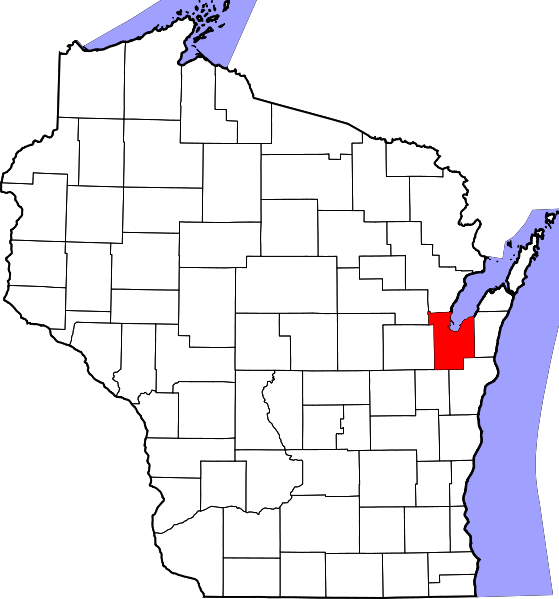 WIND FARM BACKERS FACE A LONG, COLD WINTER OF DISCONTENT
WIND FARM BACKERS FACE A LONG, COLD WINTER OF DISCONTENT
SOURCE: WBAY-TV, www.wbay.com
November 10, 2010 By Jeff Alexander,
It could be months before a decision is reached about a controversial plan to build what would be the state’s largest wind farm in southern Brown County.
Tensions are rising in the communities of Morrison, Hollandtown, and Wrightstown. The battle lines are drawn, and have been for a year now, throughout the farm lands.
“The fight is not over in my mind — or in reality. It’s not over,” Jon Morehouse said.
Morehouse leads a group of more than 200 residents opposing a plan by a Chicago-based company to erect 100 wind turbines.
The state’s Public Service Commission and lawmakers will have the final say, but Morehouse says he was told by several lawmakers Wednesday it could be spring before a decision is made.
But that’s not what Roland Klug is hearing. Klug says he’s already receiving money from a contract he signed to have two turbines on his property.
He says a project engineer told him construction will start soon.
“In the winter they’ll start getting the roads in and things, and I hope by next year this time they should be up,” Klug said.
Late Wednesday afternoon Action 2 News received word from the Public Service Commission that it’s still waiting for the wind farm developer, Invenergy, to complete its application for the project. The PSC says Invenergy withdrew its original application.
While Klug stands to make $18,000 a year for the use of his land, it’s coming at a cost. “My own kids don’t talk to me. It’s really hard.”
The wind turbine debate has become so heated and divisive here in southern Brown County, the principal of Morrison Zion Lutheran School says staff recently imposed a moratorium on students discussing the topic during school.
As residents wait for final word, opinions become stronger and wounds grow deeper.
“I think anything can be healed, but it has to be talked about,” Morehouse said.
But even that hasn’t helped so far.
SECOND FEATURE
NOTE FROM THE BPWI RESEARCH NERD: Below, another news story regarding the issue of conflict of interest between members of local government who have the power to push a wind project through and the wind developers who offer them lucrative contracts to help make this happen. This scenario is being played out in communities all over North America, including here in the Badger state.
While creating rules governing the siting of wind turbines, Wisconsin's Public Service Commission had an opportunity to provide language which would protect communities from such conflicts of interest. The Public Service Commission declined to do so.
TEMPERS FLARE AT MEETING IN CAPE VINCENT: OPPONENT OF WIND CLAIMS BOARD ACTED ILLEGALLY
SOURCE: Watertown Daily Times, www.watertowndailytimes.com
November 11, 2010
by Nancy Madsen, Times Staff Writer,
CAPE VINCENT — A Planning Board meeting devolved into physical confrontation between an opponent of industrial wind power projects in the town and Chairman Richard J. Edsall.
At the beginning of the meeting Wednesday night, Mr. Edsall asked for approval of the board’s minutes from a previous meeting.
Hester M. Chase, a community wind project supporter but opponent of the two industrial-scale projects, stood and said the board was not acting legally. The board’s bylaws say public comments “shall be received prior to the conduct of the regular business agenda.”
“We have the right to make comment,” she said. “We’re going to start getting our rights straight.”
The board members turned toward each other and spoke, apparently approving the minutes from Oct. 13. It is unclear whether they also approved minutes from an Oct. 27 meeting with Acciona Wind Energy USA, developer of St. Lawrence Wind Farm. During the Oct. 27 meeting, the board accepted a list of what remained to be done for a complete site plan from the developer.
That meeting was stopped for an hour by wind power opponents protesting action by the board, which has three members who have conflicts of interest with Acciona or BP Alternative Energy, the other wind developer in the town.
Ms. Chase had a different version of the minutes that included the topic of the protest and said the board had proceeded with the meeting while the audience was unaware of its actions.
“They’re so fraudulent that I just felt they should be corrected,” she said after Wednesday’s meeting. “The bylaws permit the public to speak before regular business is conducted and I wanted to correct those minutes.”
Ms. Chase said frustration at having unanswered questions on setbacks on wind farms and what the board will allow the developers to do led to her actions. The Planning Board has decided on rules to govern the approval process that include allowing two public hearings with comments limited to people who live within one-half mile of the project, she said.
“I was just stunned at how cavalierly or arbitrarily they were making things up,” she said. “I had held onto the hope that they were truly going to do right by their community. I see that they seem to be fulfilling loyalty roles to BP and Acciona, I guess.”
On Wednesday night, Mr. Edsall opened a public hearing on a subdivision without addressing Ms. Chase’s concerns.
“Mr. Edsall, you are out of order,” Ms. Chase said.
The public hearing, he said, was for comments on the subdivision only.
“These people have the right to due process,” Mr. Edsall said.
“How can you make decision on anything if the board is corrupt?” asked Michael R. Bell, Cape Vincent.
Mr. Edsall responded, “These people have followed the rules.”
The board held public hearings and voted on two subdivisions. The three members, Mr. Edsall, Andrew R. Binsley and George A. Mingle, did not have maps available to act on a third subdivision.
Mr. Edsall then told wind opponents that if they wanted to talk about wind power development, the earliest the board would hold a meeting on it would be February.
He then asked to adjourn the meeting.
“You cannot do that,” Ms. Chase spoke up. “You are despicable. You approved the minutes, which are totally, totally false.”
She moved toward the dais and began passing papers to the board members.
Mr. Edsall said, “When we have a wind meeting, you can talk about wind.”
Mr. Bell said, “It’s about procedure — this is about procedure.”
Ms. Chase said, “You just lied to the whole community.”
As Mr. Edsall moved off the dais, she stood between the desk and a table. She appeared to bump into him. Mr. Edsall threatened to call the police if she touched him again.
She said he bumped into her.
“Will you get out of my way?” he asked.
She refused, but eventually let him pass. As the board members left, some members of the public berated them for passing the minutes. About a third of the audience consisted of wind power supporters. Some of them told the vocal opponents to back down.
10/3/10 Should wind developers be licensed before they start signing up landowners? Do the new wind rules provide enough protection for landowners from unlicensed wind developers?
Click on the image above to hear Wind Siting Council members Tom Meyer and Doug Zweizig express concerns about wind developer licensing and accountability issues regarding contracts and leases, and why there should be more protection for Wisconsin landowners built into the rules.
On October 13th, there will be a full public hearing at the capitol because of questions raised regarding the Public Service Commission's new wind siting rules for the state of Wisconsin.
Senate
PUBLIC HEARING
Committee on Commerce, Utilities, Energy, and RailThe Senate Committee on Utilities, Energy and Rail will hold a public hearing on Wednesday, October 13, 2010 11:00 AM, 411 South at the State Capitol in Madison relating to Clearinghouse Rule 10-057 siting of wind energy systems.
Senator Jeffry Plale, Chair
CLICK HERE TO DOWNLOAD CLEARING HOUSE RULE 10-057
9/19/10 What part of 'conflict-of-interest' don't you understand?
Note from the BPWI Research Nerd: The story below outlines a problem that comes with wind development everywhere, including Wisconsin, where wind projects have been approved and permitted by members of local government who stood to gain financially from the project or had family members who would.
Although some members of the Wind Siting Council saw the conflict of interest issue as a problem that should be directly addressed in the wind siting rules, the majority of the council-- most of whom happen to have a direct or indirect financial interest in the outcome of the rules-- decided against including it.
Records show area officials profit
from leases with turbine firms
SOURCE: Observer-Dispatch, www.uticaod.com
September 18,2010
By JENNIFER BOGDAN,
Twelve public officials who sat on county and town boards in Lewis County stand to make a combined $7.5 million from the region’s largest wind-turbine project, government disclosure forms show.
And numerous other officials in Herkimer County stand to profit as well from new projects there, although not to the same extent, records show.
The lease arrangements have raised questions among local residents and good-government experts about potential conflicts of interest as wind-turbine farms are approved.
One person who feels that way is Gordon Yancey of the town of Lowville, who used to have a clear view of the Adirondacks stretching as far as the eye could see from his property on the edge of the Tug Hill plateau.
But in 2006, the sprawling Lewis County landscape became home to the Maple Ridge wind farm – a group of 195 wind turbines towering 400 feet high over the once undeveloped landscape in Lowville, Martinsburg and Harrisburg. Those communities are located along state Route 12 about one hour north of Utica.
Now, Yancey said all he sees are the massive white towers obstructing his view. He blames lease agreements between wind developers and public officials, one of whom is his brother, Edward Yancey, who sat on the Harrisburg Zoning Board of Appeals.
Edward Yancey stands to benefit to the tune of up to $1 million over the lifetime of the agreement, according to disclosure forms filed with the state by Iberdrola Renewables and Horizon Wind Energy, which co-own the project.
“They made their sweetheart, backdoor deals long before anything was made public,” Gordon Yancey said. “Of course, the boards pushed everything through.”
Edward Yancey could not be reached.
Disclose or face fine
A 2008 mandate from the state Attorney General’s Office requires wind companies to disclose the nature and scope of any municipal officer’s financial interest in a wind project or risk facing fines of as much as $100,000.
No companies have been penalized to date, according to the state Attorney General’s Office.
“In order to avoid even the appearance of impropriety, we publically disclose any relationship with a municipal officer or their relative,” Iberdrola spokesman Paul Copleman said.
Lise Bang-Jensen, senior policy analyst for the Empire Center for New York State Policy, said any move towards increased government transparency is admirable, but making sense of conflicts is more complex than writing them down.
“If you have a role on both sides of a project, that’s a clear conflict of interest,” Bang-Jensen said. “Putting it on a piece of paper and disclosing it, doesn’t make it legal.”
Many of the officials listed on the disclosure forms – including Harrisburg Town Supervisor Stephen Bernet, who stands to make $1 million – did not return calls last week.
One of those listed on the disclosure forms is Roger Grace, a Planning Board member in Pinckney. Maple Ridge wind farm spreads across Lowville, Harrisburg and Martinsburg, but Grace, who stands to make as much as $20,000 from the project, still is required to disclose his role in a neighboring town.
He said his role isn’t a concern, and he believes those involved have acted appropriately.
“I think everyone’s done a phenomenal job,” Grace said. “It’s always a battle, though. People that got money love them, and people that didn’t get money hate them. That’s all.”
‘Not acting objectively’
The issue of lease agreements between public officials and wind developers is burgeoning in Herkimer County, where the Hardscrabble wind farm is slowly rising.
The Herkimer County towns of Fairfield and Norway will soon be home to 37 turbines – seven of which are already standing.
In that project, five officials stand to make as much as $85,000 from the turbines that are expected to be up and running by the end of the year.
“For any municipal officers or their relatives with whom we have a relationship, we specifically request that the officers recuse themselves from a decision or vote that would in any way affect the development of a project or affect how the municipality treats wind power,” said Copleman, the Iberdrola spokesman.
Yet six years ago, when the Hardscrabble project was nothing more than a vague concept, questions arose as to why Fairfield Planning Board member Harold Robinson was voting on wind issues while he had an agreement with the wind company aiming to come to town, according to O-D archives.
“The Town Board is not acting objectively,” Fairfield Planning Board Chairman Peter Fishbein complained in 2004. “The board needs to acknowledge there are people who are worried about this and at least hear their concerns.”
Robinson, who stands to make as much as $20,000 from a lease agreement, did not return calls last week.
‘Won’t like the looks of things’
Other wind projects are brewing across the Mohawk Valley, including a plan from NorthWind and Power to build a farm of eight to 12 turbines on Dry Hill in Litchfield.
In that development, some residents have questioned the role played in the process by Litchfield Supervisor Wayne Casler, He is a regional controller at Barrett Paving Materials, which owns more than 100 acres of land on the southern end of Dry Hill.
Wind developers have said the paving company’s land won’t be considered, but the company could be chosen to supply materials for the project if it’s approved.
From time to time in Lowville, Gordon Yancey hears rumblings of other wind farm in the works – like the one in Litchfield.
Each time, he said, he thinks back to the days before his business was surrounded by turbines. Oftentimes, the curious come knocking on his door to ask what his experience was like years before.
“What I tell people is ‘Educate yourselves because you can’t trust where anywhere else is coming from,’” Yancey said. “Ask every question you can. And when you do, you won’t like the looks of things either.”
9/6/10 What to expect when you're expecting wind farm construction
What should you know before you lease your land to a wind developer?
You should know you must consult an independent lawyer BEFORE YOU SIGN. You will need someone who can tell you how the contract says the lease holder can use your land before, during and after construction.
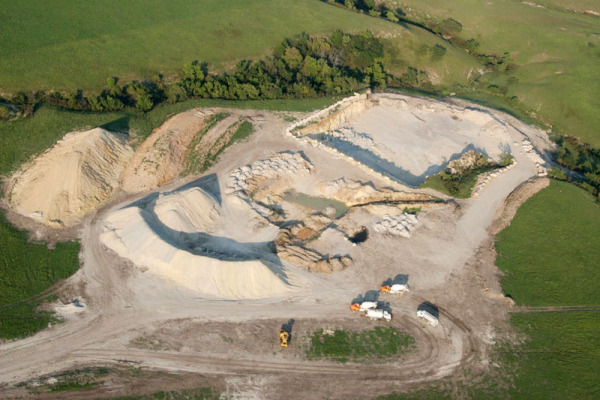
This picture shows the construction of a wind turbine project in Kansas.
Let's look closer..... 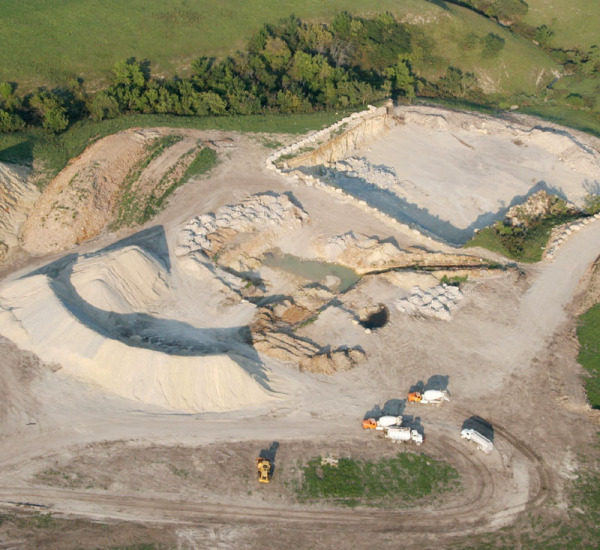
You should know how much of your land will be used during the construction phase and for how long, if you have any say at all in where the turbines will be sited, where the cables will be laid, and where the access roads will go. Only an independent lawyer can tell you what the contract says about this.
Look closer-
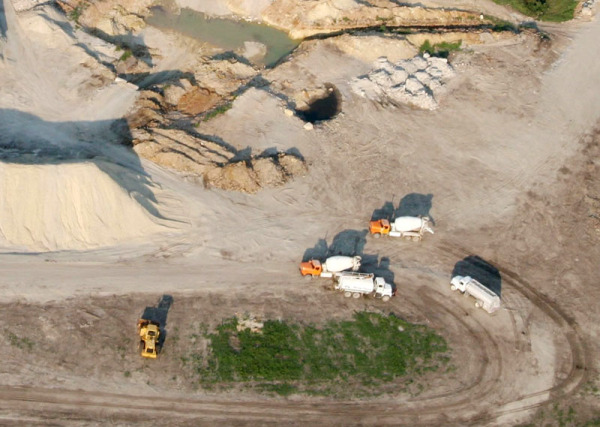
You should know that contracts may give the lease holder the right to go over, under, upon, along, and across your land, 24 hours a day, 7 days a week for the next 20 to 30 years. You should know what your rights are if changes, disputes or problems arise, and by what means problems may be resolved. An independent lawyer can tell you this.
Look closer..
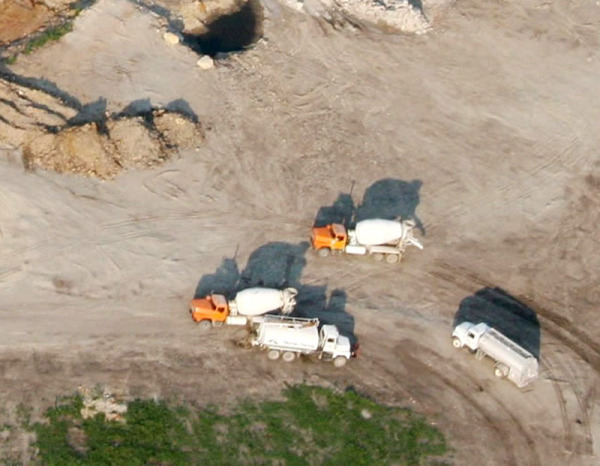
You should know that most lease agreements will be legally binding not just to you, but to your kids, any heirs, any future buyers, successors, executors, or assignees of any kind. You should know that most lease agreements require that ANYONE who owns the land after you or wishes to buy the land from you, will be also legally bound by the terms of this contract. Only an independent lawyer can tell you exactly what this means to the future of your property.

(To see more of this series of construction photos taken in Kansas, click here.)
8/26/10 Gone with the wind developer: Family lets the PSC know why they regret signing on with Invenergy AND a resident who has been living in the Invenergy Forward wind project for over two years lets the PSC know he and his family are having trouble.
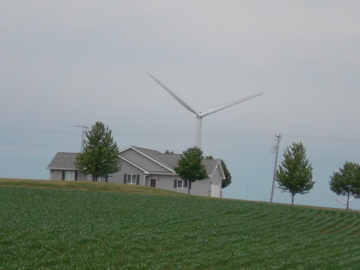 Home in a wind project, Fond du Lac County
Home in a wind project, Fond du Lac County
MORE FROM THE DOCKET: What Wisconsin residents are saying to the PSC about recent wind siting discussions
FROM BROWN COUNTY
Dear PSC Members,
My name is Marilyn Nies.
We signed a contract with Invenergy in Brown County.
Boy what a scam this all is. It was like the snake oil salesman in the movies. After two years so much more
information came out concerning turbines.
We also for some dumb reason never put two and two together concerning our daughter. Our youngest child has three separate heart issues. One of them being WPW, which is an electrical impulse disorder.
I am afraid stray voltage and the low frequency noise will harm her. Needless to say we want out of
our contract. They will not let us out.
They outright lied and lied by omission. People do not vacate their houses that they have put their whole adult lives into fixing up for no reason. There is a problem here and no studies have been done. They just keep saying there is no evidence, because nothing has been done!
You are putting the cart before the horse. I and many others feel studies should be done before this goes any further. In addition, in Brown County especially, each turbine should be looked at individually or not at all due to the karst rock features.
My final point is money...... I don't want any money from them.
I don't think many of the other people not signed up want money either. I tried to send the money back that we received direct deposit, they would not cash the check. Since then I have closed the account. Invenergy now mails the checks and I burn them. We want to live here without our land value decreasing and without
health risks.
It is called being responsible. Even 1300 feet is not much if you get a storm like we had Friday. There was a section 1 mile wide by 4 miles long where we had 75 mile an hour winds, come to find out it was a tornado. There are buildings and silos down and damaged all over. How far could a turbine blade or a section of one go? Especially if there was mechanical failure combine with an act of God? Just something to think about.
I sincerely hope you take your time on this issue and get some INDEPENDENT studies done. We
have to live with these the rest of our lives. What is the big deal if it sits another year until we know
for sure?
Marilyn Nies
Greenleaf, WI 54126
FROM FOND DU LAC COUNTY:
Heilman, Alice - PSC
From: Gerry Meyer
Sent: Tuesday, August 24, 2010 12:51 PM
Cc: Jones, Krystal - PSC; Paske, Sandra - PSC
Subject: Comments per Commissioners meeting of 8-23-10
Dear Public Service Commissioners Azar, Meyer and Callisto,
My comments are in response to Monday’s meeting concerning the draft rules for wind turbine siting.
I live in the Forward Energy project by Invenergy so I have first hand knowledge of what life in a wind farm it truly like. My statements are not third party or from listening to others.
I have many thoughts based on listening to your meetings last Thursday (August 19) and yesterday (August 23).
Commissioner Azar, you seemed to be concerned for residents living near large industrial wind turbines in that you were looking at sound pressure reading of 40 Dba and a set back that would equal 2200 feet.
Yesterday you relented on your original thoughts.
At 6:55 this morning I went out with my sound meter to take a reading. The wind was from the SW which in my case is the worst sound. I had a Dba of 42 and a Dbc of 58. The sound was bouncing higher, however I tried to go to the low side with a slight feeling for an average sound pressure reading. The sound was bordering on the sound of a jet to a loud whooshing sound.
I talk to people that are having issues with the sound, however do not pay close attention to wind direction. As I mentioned generally the loudest sound is when the wind is from a westerly direction, however when the wind is from the E, SE and NE I get the least sleep.
I believe even a 40 Dba sound pressure is too loud and the commission needs to lower the sound to 5 Dba above ambient or at the very least 40 Dba. I have found that I do get pretty good sleep when the turbines are turning at 11 rpms or less which I would say is slightly above cut in speed.
Often we do not necessarily hear the wind turbines, yet sleep deprivation is present. The wind energy industry is dismissing the affects of low frequency noise and possibly infra sounds. That is why l listed the Dbc level above.
The commission needs to look at low frequency sound. I must strongly suggest you can not compare airplanes, trains or traffic sounds to large industrial wind turbines. The turbines are in a class by themselves as far as the effects they cause.
I do not receive shadow flicker. Well I do get flicker just briefly only several days a year, however in our case the many trees block out any serious effect it may have. I do know a number of friends and now acquaintances that have a horrendous time with shadow flicker.
One of those affected is siting council member Larry Wunsch. If the commission OK’s 30 hours of flicker a year before curtailment they may not understand that could mean 52 days or more of flicker.
Some of the council members felt that a non participant’s property should not be invaded by shadow flicker (the minority). I would tend to agree with that thought. Turn your lights on and off once per second for 40
minutes to see if that would be more than just annoying or a disturbance.
I am the one that submitted my cortisol levels to the docket. Briefly I was gaining weight in 6 to 7 pound increments while trying to eat less. I consulted with a Dr. who suggested I have my cortisol checked. During the time of high sleep deprivation from the 5 turbines with 5/8 of a mile of our house I had it checked. My cortisol level was 254.
After the Forward project was shut down for 21 days last October I found I had lost 17 pounds of the 30+ pounds I had gained. I had my cortisol level checked that very next day after the turbines began turning and the level was 35. It should be less than 100.
Yes, everyone seems to have stress, but I feel the high level was due to the turbines being irresponsibly placed too close to our home.
In my case I have one (turbine) 1560 feet away, one 2480 feet, and three at 3300 feet away. The first two are measured the later three are estimates based on maps. Even a half a mile set back would be a very conservative compromise. One of those at 3300 feet away are as loud as those 1560 and 2480 feet away
I feel the commission needs to enact a property value guarantee. I have seen properties list
for $219,000 and sell for $129,000. I have seen one property be abandoned, I have seen houses go
up for sale and never sell.
I know of homes that have been for sale since the project went up and have failed to sell. I feel prior to large wind turbine constructions my property of 6+ acres, a large farm house completely remodeled, the former dairy barn of 40’ X 92’ and a new 26’ X60’ garage/shop was worth $500,000. I would now estimate it to be worth about $200,000. Those estimates are based on being a carpenter in a previous life.
Wind energy companies constantly state that there is no loss in property value. If so why not be willing to guarantee that statement with a property value protection.
I do not trust modeling as a way to avoid shadow flicker and noise. An example would be mileage standards for cars. Do you get the mileage that is on the window sticker? Industrial turbine manufacturers can manipulate statistics to meet the needs of buyers and builders. Shadow flicker modeling takes into account variables that may not be there. Those models should take in to account the worst case scenario not the least case scenario.
I am offended by I believe Commissioner Meyer’s comment that some of these issues are needed for the good of the whole. Those may not be the exact words, but close.
I don’t believe my family or I or many others that are victims of wind energy should have to make this sacrifice. I know this is not part of the issue, yet on the other hand it is. Wind energy and the electricity it produces is very costly and wind energy is very inefficient. It is not causing any reduction on traditional energy use and is doubtful if it is reducing any carbon dioxide emissions after all the considerations are
factored in.
Part of the draft rule addresses allowing political subdivisions to allow compensation for adjacent land owners up to the amount the hosting farmer is receiving. (Page 36 of 44 128.33 sub 3) Wind energy is not accepted currently because of being improperly sited and the effects it causes.
If there is to be an increased acceptance of the wind industry this would be a great way to achieve it. I have often thought about if I had property value protection and receive the same compensation as my hosting neighbor I might be able to accept some of the disadvantages of this project.
In Monday’s meeting consideration was given to farm animals, domestic animals and wildlife.
My first reaction to that statement is “What about people” “Don’t we have some value?”. We should be at the top of the list.
We used to see deer at least once a week and 16 to 20 turkeys every few days from our house. Since construction of the turbines began (winter of 2007) we have not seen even one deer and only 2 turkeys.
Signal interference was touched on. We do have a satellite dish however we still have our old fashioned TV antenna. We need that to get Green Bay stations. If the wind is in a certain direction we can not get Green Bay.
There are people that rely on TV antennas that need protection from wind turbine interference with out having to fill out a W9 and receive a 1099 at the end of the year. For my internet I have a private company with a free standing tower 5 miles from my home. It is not affected; however other residents may be and need protection from losing their service. There needs to be set backs from emergency frequency beams.
I am concerned about community wind. Community wind needs to be treated the same as regular or large wind. If not what would happen is a community wind project of up to 15 MB would bebuilt. Let’s go 5 miles away and build another community wind project.. Now let’s connect the two and soon there could be 50 turbines that were intended to be a community wind project.
Don’t say that won’t happen. It did in Washington or Oregon.
If you read and research you know that world wide wherever there are large industrial wind turbines there are concerns and complaints about health issues.
Also of concern is decommissioning. Wind energy companies can sell the project, go bankrupt or flee the country. The money needs to be upfront. I believe the wind energy company representatives on the wind siting council grossly underestimated the decommissioning costs.
Standing turbines or even disassembled turbines lying on the ground are not in recyclable condition. They would need to be cut up in small pieces. I doubt that round 1” steel can be conveniently sheered.
I read over and over that Wisconsin’s past laws were a “patchwork” of rules and discouraged wind development in Wisconsin. Let’s leave wind out of this next statement.
If you take my township’s (Byron) building ordinance and compare it to Town of Fond du Lac’s or the Town of Union (Rock County) those building ordinances would be different. Does that curtail building or barns, silos or
homes? Should all building codes be controlled by the state?
There are town and county wind ordinances that are good with months or even over a year of research before their enactment. Those ordinances were never even discussed by the wind siting council.
That needs to be looked in to and the value of those existing ordinances evaluated. The Town of Union, Magnolia and Trempealeau Counties are great ordinances.
Commissioner Azar, it was me that got your attention at the wind siting council meeting asking for a brief conversation after the meeting when Jevon McFadden was giving his presentation. I later talked with Crystal Jones attempting to set up an appointment with you.
I did later receive a call from possibly Brian letting me know a visit together was not going to be possible. My thoughts at the time were for you to visit so that I could give my first hand account of the effects on my family from actually seeing my property for yourself.
I would have showed you around the project pointing our the many others with issues shadow flicker, noise, health issues and homes that are not selling or selling much below their market value.
I based my thought on the fact that in a previous meeting (May 14?) you expressed a concern about shadow flicker. I am disappointed this visit did not seem necessary.
As a tax paying citizen of the great state of Wisconsin I am not in favor of the subsidies, production credits and other incentives to wind energy companies and utilities for wind development.
Enough incentives have been paid over the years to develop wind. I don’t believe those incentives have worked to prove wind energy a viable source of electricity generation. If it was a feasible source of electricity it would have proved itself. I would rather see my tax dollars go to the state buying a house in a wind project and for the commissioners to spend a few weeks at a time living in that house and commuting to Madison so that they can learn for themselves what life in a wind project is really like.
I don’t believe Wisconsin should be promoting the financial interests of wind energy companies and utilities. I strongly believe the Public Service Commission of Wisconsin and the State Health Department should be most concerned about the health affects large wind turbines cause that are irresponsibly placed too close to the residents of Wisconsin citizens.
In summary 50 dba is too high. 45 dba is too high. I believe 40 dba can be too high. 5 dba above ambient should be the standard. Why should a non participant put up with any shadow flicker? Set backs need to be ½ mile or more. Property value protection is a must. Signal interference needs
to be corrected and for the life of the project.
Thank you for considering my comments,
Gerry Meyer
Brownsville WI
